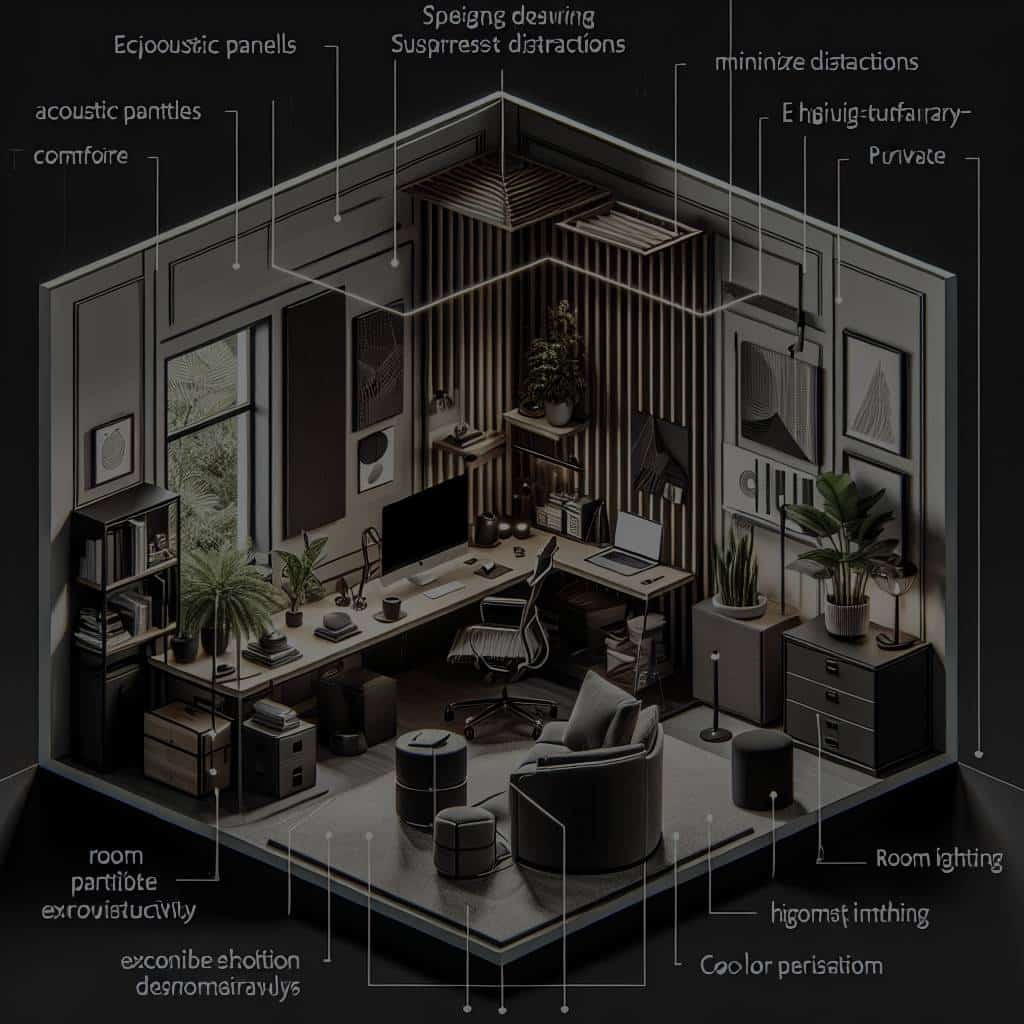As more people are adapting to the work-from-home setup, the need to create a workspace at home that increases productivity, limits distractions, and promotes wellness has never been more critical. Your home office must be a space that fosters concentration and productivity, and this includes considering factors such as ergonomic design, appropriate lighting, and strategic placement within your house. In this article, we will delve into how you can design an effective and efficient home workspace that caters to your professional needs while fitting seamlessly into the dynamics of your household.
Creating a Dedicated Workspace
When designing a home office, the first aspect to consider is to create a dedicated workspace. This means selecting a specific area in your home where you will do most, if not all, of your work-related tasks. It could be a spare bedroom, a portion of your living room, or even a corner in your kitchen. The goal is to have a distinct boundary separating your workspace from the rest of your living environment to reduce potential distractions and enable you to focus more on your work.
Also read : What’s the Best Way to Create a Sensory Garden for Therapeutic Benefits in Your Backyard?
It’s important to consider the nature of your work and your household’s dynamics when selecting the location for your workspace. For instance, if your work requires a lot of concentration and your home is always bustling with activities, you might want to choose a more secluded area. On the other hand, if you have young children who need constant supervision, a more open location might be more suitable.
Incorporating Ergonomic Design
Once you’ve determined the location of your workspace, the next step is to incorporate an ergonomic design into your workspace. Ergonomics is the study of people’s efficiency in their working environment. It aims to design workplaces, products, and systems so they fit the people who use them, rather than forcing people to adapt to a poorly designed workspace.
In the same genre : What’s the Most Efficient Way to Incorporate a Discreet Home Elevator for Accessibility in Multi-Story Homes?
When setting up your home office, consider investing in an ergonomic desk and chair. Your desk should have enough room for your computer, keyboard, and any other necessary tools. Your chair should support your back, and you should be able to rest your feet flat on the floor when sitting. Additionally, your computer monitor should be at eye level to prevent straining your neck and eyes.
Optimal Lighting for Productivity
The lighting in your workspace significantly affects your productivity and well-being. Poorly lit workspaces can cause eye strain and headaches, negatively affecting your productivity. On the contrary, a well-lit workspace can increase your energy, reduce fatigue, and improve your mood.
Your workspace should have at least two sources of light: natural and artificial. Natural light is the best type of light for any workspace. It helps regulate your body clock, improves mood, reduces eye strain, and increases productivity. If possible, place your workspace near a window that allows plenty of natural light.
However, relying solely on natural light is not feasible as the amount and quality of natural light change throughout the day. Therefore, it’s important to have supplementary artificial light. Consider using task lighting, such as a desk lamp, which provides focused light on your working area.
Minimizing Distractions in a High-Traffic Household
Designing a home office that minimizes distractions, especially in a high-traffic household, can be a challenge. But with careful planning and strategic design, you can create a conducive working environment even in the busiest homes.
Establish clear boundaries with your household members regarding your workspace. Let them know that when you are in your workspace, you are working and should not be disturbed unless it’s urgent. Use physical cues, such as a closed door, headphones, or a do not disturb sign, to signal to others that you are in focus mode.
Invest in noise-cancelling headphones or white noise machines to drown out household noises. Also, consider using room dividers or curtains if your workspace is in an open area to create a psychological and visual barrier between you and the rest of the house.
Emphasizing on the Aesthetics
The aesthetics of your workspace can significantly impact your mood and productivity. Therefore, it’s important to create a space that not only is functional but also pleasing to the eyes.
Choose a color scheme that makes you feel calm and focused. Cool colors like blues and greens are known to have a calming effect, while warm colors like reds and oranges can stimulate the mind. Include personal touches, such as family photos, inspirational quotes, or artwork, to make your workspace more personal and motivating.
Lastly, keep your workspace neat and organized. Clutter can be distracting and can make it difficult for you to focus on your work. Invest in storage solutions, such as shelves, drawers, and filing cabinets, to keep your workspace tidy.
Designing a home office that minimizes distractions in a high-traffic household may seem like a daunting task at first. But with careful planning, strategic design, and the right mindset, you can create a workspace that boosts your productivity, fits seamlessly into your household, and makes working from home a more enjoyable and fulfilling experience.
Incorporating Biophilic Elements
Biophilia is the idea that humans have an innate connection to nature and feel more at ease in natural settings. Incorporating biophilic elements into your home office design can bring calming, natural elements into your workspace, contributing to a more relaxed and focused mindset.
Start by adding plants to your workspace. Studies show that indoor plants can improve concentration and productivity by up to 15 percent, reduce stress levels, and boost your mood. Succulents, spider plants, and snake plants are great choices as they are easy to care for and purify the air.
Natural materials like wood, stone, or bamboo can also be incorporated into your office design. These materials can create a calming and grounding effect, which can help you stay focused despite the high-traffic nature of your household. For example, a wooden desk or stone coasters can add a touch of nature to your workspace.
Finally, consider bringing in natural sounds or aromas. Listening to nature sounds like a bubbling brook or chirping birds can be relaxing and help block out distracting household noises. Similarly, essential oils like lavender or peppermint can create a soothing atmosphere conducive to focus and productivity.
Balancing Privacy and Accessibility
In a high-traffic household, striking a balance between privacy and accessibility in your home office design can be challenging. However, balancing these two factors is key to creating an efficient workspace that minimizes distractions while still allowing you to remain connected to your family.
One way to achieve this balance is by using semi-open dividers such as bookshelves or decorative screens. These dividers can provide a degree of separation from the rest of the house, creating a sense of privacy. At the same time, they still allow you to keep an eye on what’s happening around you, providing some level of accessibility.
Another approach is to use sound-absorbing materials in your office design. For instance, installing carpet or rugs can help reduce noise, making it easier for you to focus on your work. Similarly, hanging curtains or drapes can absorb sound and also provide visual privacy when needed.
Conclusion
Designing a home office in a high-traffic household that minimizes distractions, promotes productivity, and fosters wellness involves careful planning and strategic design. It requires creating a dedicated workspace, incorporating ergonomic design, ensuring optimal lighting, minimizing distractions, emphasizing aesthetics, incorporating biophilic elements, and balancing privacy with accessibility.
While the task may seem daunting, the reward of a well-designed home office is a boost in productivity, a reduction in stress, and an overall improved work-from-home experience. Ultimately, the goal is to create a workspace that not only meets your professional needs but also fits seamlessly into your household, making working from home a more enjoyable, fulfilling, and successful endeavor.






